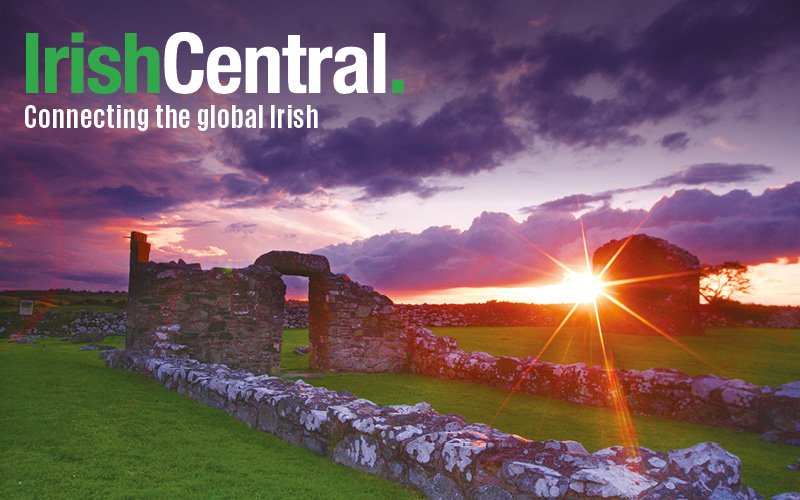A woman who previously wrote a viral anonymous appeal to find her two missing brothers born in the Tuam Mother and Baby home, is the subject of a new book by writer Alison O’Reilly.
In late 2016, a woman then identified only as “the Dolan sister” wrote a heartbreaking plea published on IrishCentral.com in a bid to find her siblings John Desmond and William Joseph Dolan.
The woman was holding on to a shred of hope that her brothers, deemed “illegitimate” by those running the Galway-based Bon Secours Mother and Baby Home, were still alive.
“Somebody, somewhere must know who they are and what happened to them. They are two of Ireland's longest missing children, but very few people know that. I don’t know anyone who knew them. I am an only child. I don’t have a photo of them. All I have is certificates, and that’s it, that is all there is to prove they existed,” she wrote in the viral piece, which can be found in its entirety here.
Armed with just birth, baptismal, and death certificates, the woman was convinced that her brothers could have been among the children sold illegally to American parents. She maintained that their supposed death certificates, with little or no causes of illness, just did not add up. They must be still out there somewhere, she wrote.
Read More: Tuam dead babies scandal is only the tip of the iceberg
The woman has now waived her anonymity, and is the subject of a new book written by Irish journalist and documentary maker Alison O’Reilly.
O’Reilly’s book “My Name is Bridget” is the collaborative result of years’ worth of research by Anna Corrigan, recounting the harrowing experiences of her mother Bridget, and the mysterious fate of Bridget’s two boys.
Speaking to IrishCentral.com, author O’Reilly said that when Corrigan approached her in May 2014 with revelations that “nearly 800 babies were buried in a mass grave in Tuam” along with a belief that the death of her mother’s two sons had been contrived, she knew she had to break the story.
“I went to meet her at her home and together, along with Catherine Corless who had the names of the other children who died at the home, I wrote the first story on the mass grave scandal and it gained huge international attention and lead to the establishment of the Commission of Investigation into mother and baby homes.”
[The Daily Mail story that shocked the world and exposed an Ireland rife with dark secrets can be read here. This New York Times’ harrowing account of Tuam and a profile of relentless researcher Catherine Corless is also crucial reading.]
Together, O’Reilly, Corrigan, and Corless (below right) continued to keep revelations about the Tuam home circulating in the Irish media almost every week for three years. A book was the next “natural step to take” O’Reilly said.
A single mother-of-three, the Irish Daily Mail journalist worked on the book every night from 11pm to 3 or 4am.
“It was very intense. But I am very happy to watch it come to fruition. I spent a lot of time thinking about Bridget and all the other women and children who walked the same path as her. I am an "unmarried mother" too so I find it hard to comprehend how someone like me could have ended up in one of those homes,” O’Reilly said.
Read More: 2,000 Irish children were illegally adopted in the US from Magdalene Laundries
O’Reilly, who is a birth, adoptive, and foster mother, said the process of writing the book was extremely difficult at times as she pondered the vulnerability of unmarried women and their children who came before her in an unaccepting time.
“I often think of the children who have died and I hope wherever they are, they are standing on the shoulders of giants because now, thanks to the global attention my 2014 story received they went from being buried in a cesspit for all those decades to being big bright angels in the sky. I feel very humbled to have written a story that got such a massive reaction,” she stated.
“My Name is Bridget” finally shares the story of Corrigan’s mother Bridget Dolan, from her pregnancy at age 26 and her time spent shunned by society at the Tuam Mother and Baby Home, to her life as a married mother still haunted by the fate of her two boys.
Read More: Irish officials aware of mother and baby home mass graves years before politicians and public
The book continues to follow the story from Corrigan's perspective. Before the initial revelations that the remains of 796 babies had been found in a septic tank in Tuam, Corrigan discovered records proving that she had two unknown brothers; propelling her into a dogged search to find out what happened to them.
The legacy of Tuam and other Mother and Baby homes has revealed a nation with a past plagued by societal taboos, systemic cover-ups, and a pervasive mistreatment of unmarried women and their offspring.
But O’Reilly points out that this is not necessarily an Ireland of a by-gone era.
“There is a lot to learn from what happened in Tuam and there are things happening in Ireland now which I have no doubt will be written about in 20 or 30 years,” she said.
“I also found Ireland's Special Rapporteur Dr. Geoffrey Shannon's children's death review - which showed nearly 200 children died in the care of the state over a 10 year period as one of the most distressing pieces of work I ever read. This wasn't a historical story, this covered recent years. Children were murdered, neglected, abandoned....It made for horrific reading," she lamented.
"He brought out another damning report last year on the Section 12 order which allows the police to take children into emergency care. Again, that audit was a very recent study. All of Dr. Shannon’s findings were accepted at government level. We are not caring for our foster children the way they should be cared for. Tuam itself was a place of absolute horror, fear and control, where hundreds if not thousands of people were left floating out on the edge of the earth all alone and frightened with no one coming to save them or help them. It was a place of sadness and pain. I think we have a lot to learn from this period in Irish history.”
It was recently revealed that published findings of investigations into these homes have been delayed by a year - until February 2019 - a traumatic decision for those who have already waited decades for justice and closure.
“I wasn't surprised when I heard the date was pushed back, I felt there was too much to do in three years and I didn't think they would achieve this,” O’Reilly said. “But it means those who are aging survivors of the homes have another year to wait for answers, and even then will they get the answers they are looking for?”
O’Reilly urges that every effort should be made by the State, the church, and the Pope who has been “quiet on the story” to apologize tirelessly to the survivors, let alone provide adequate compensation and support.
“There should be redress made available to anyone who wants it. These people want to be recognised and acknowledged. The children who died in the homes must never be forgotten. I also want to see a full excavation at the site of the former Tuam home. The families of these little children want to bring them home and give them a dignified burial, it should be their right to do so”.
To pre-order O’Reilly’s book "My Name is Bridget", which will be available on April 20th, 2018, see here.




Comments